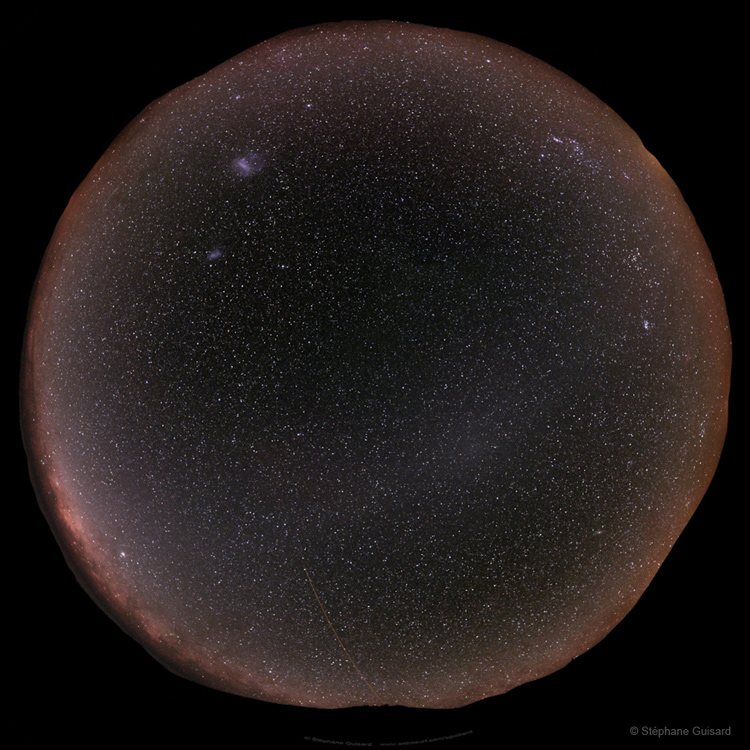Gegenschein and the Galactic Plane
Description
This exceptional all-sky view from Andes in Chile shows the complete 360-degree band of the Milky Way, our galactic plane, all around the horizon. The amazing darkness of the site and transparency of the sky allow such views from Paranal observatory, located high above the Atacama Desert. The central bulge of the Milky Way is at the lower left while our main dwarf galactic neighbors, Large and Small Magellanic Clouds, are visible at the upper part of the view. More on this unprecedented view is a band of light crossing the sky. The dust disk extending out to Jupiter’s orbit produces a faint glow all along the ecliptic, the path of the sun in the heavens. This known as zodiacal light decreases in intensity with distance from the Sun, but on very dark nights it has been observed in a band completely around the ecliptic. But the zodiacal band as captured in this unique all-sky image is so faint that it is very difficult to see visually. In fact, the zodiacal light covers the entire sky, being responsible for 60% of the total skylight on a moonless night. There is also a very faint, but still slightly increased, oval glow directly opposite the Sun known as the gegenschein (German for “counter glow”) which can be seen 180 degrees around from the Sun in an extremely dark sky. Here a deep exposure of an extremely dark sky at Cerro Paranal clearly shows the gegenschein as a softly glowing oval region a few degrees wide and 10-15° in length, oriented along the plane of the ecliptic. The gegenschein is sunlight back-scattered off small interplanetary dust particles. These dust particles are millimeter sized splinters from asteroids and orbit in the ecliptic plane of the planets.
To experience this dramatic scene as it was viewed by the photographer click on this link and allow few moments so the flash animation loads. You will also recognize various familiar constellations and larger deep sky objects and also the laser beam (at the lower part of the all-sky view) sent from Paranal Observatory while using the adaptive optics system.

comments (7)